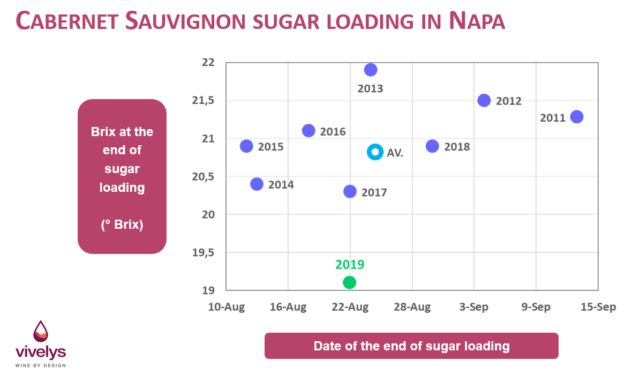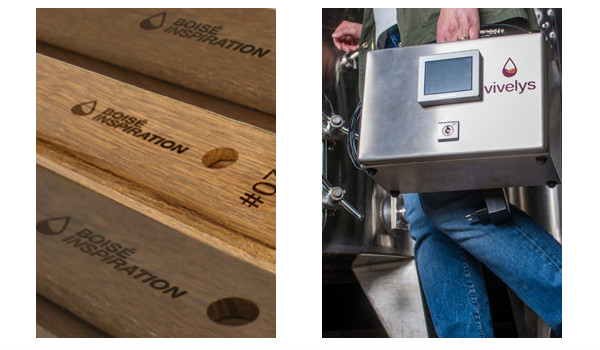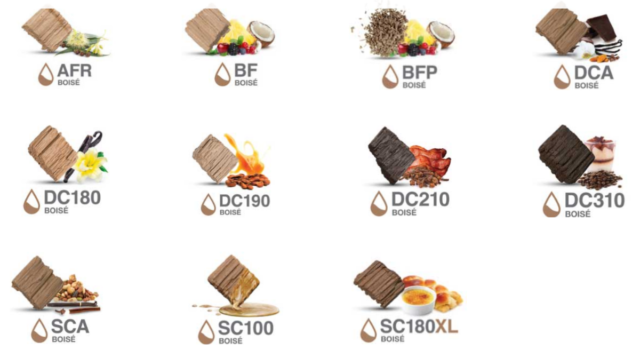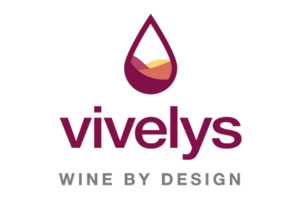Over 300 analyses in blocks followed by Vivelys’ Dyostem system are showing signs of a complicated harvest. “I’m waiting, but I can’t smell any aromas in my Cabernets,” and “the brix values aren’t moving!” are common expressions heard this harvest, especially in the Napa area.
In fact, in Napa Valley we have observed one of the lowest years in terms of average sugar load on record. This has a direct consequence on lower aromatic potential. If harvested early, there is an increased chance of finding wines with weaker mid-palates and less ripe profiles, given the low stress and atmospheric impact. Or on the contrary, aggressive tannins and low aromas if harvested too late.

How to boost volume and stabilize the aromatic potential of your wines
As mentioned above, the ripening conditions did not allow the plant to synthesize anthocyanins and aromas at the level of previous vintages. The challenges of this vintage will therefore be to stabilize the color and preserve the fruit of the wines. In this case, the winemaker can overcome these obstacles with the addition of oxygen and oak.
Oxygen Management
To stabilize the color of weaker wines, it is important to add a significant amount of oxygen (about 10 to 15 mg/L) at the early stages of winemaking. This can be done through Vivelys’ SCALYA Safe solution, which controls the oxygen supply equipment and ensures that the right amount of oxygen is provided during alcoholic fermentation. The combination of oxygen and Boisé untoasted oak, BF and BFP, can increase color stability during fermentation.
To manage reactive tannins and gain mid-palate, this initial oxygen supply must be continued by a prolonged supply of oxygen during aging. Depending on the concentration and aromatic objective, this could involve a further addition of 10 mg/L spread over a few months.
Oak Management
To increase roundness and enhance the fruit, oak alternatives can provide specific touch-ups that will adjust the original characteristics of the wine. In particular, the use of SC100 and BF between 1-3 g/L can provide certain volume in the mid-palate and enhance the fruitiness. DC190, used at 2g/L during alcoholic fermentation, could also be an option to soften the palate.
To increase the structure and reduce the perception of vegetal characteristics, it is necessary to target vanilla or the spicy/caramel oak profiles. With Boisé Inspiration staves #20.1 and #20.3, the wine will have a better integration of fresh fruit aromas while significantly increasing the overall volume in the mouth.
Vivelys has a strong U.S. based consultant team that provides technical field support to help winemakers leverage the full potential and achieve optimal oak wine integration for their target wine profiles. Boisé staves and oak chips are distributed by G3 Enterprises in the United States. For more information please contact:
Cecilia Cunningham, cc@vivelys.com – 707-480-3272
Galina Seabrook g3.info@g3enterprises.com – 707-657-3254


















